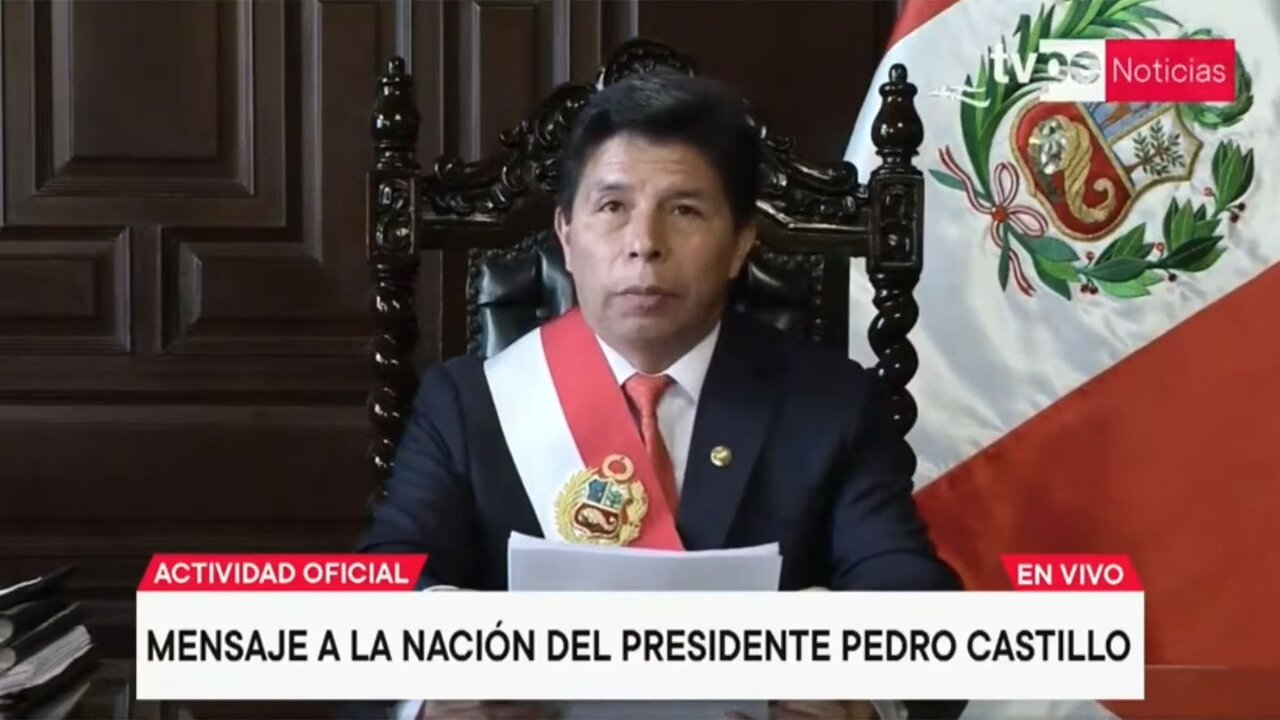House of Cards: Peru´s Political Turmoil
Published:
“Peru finds itself engulfed in a political maelstrom amidst government changes and clashes between Congress and the President. What drives this “new normal” in Peruvian democracy?”

The Crisis and its Immediate Causes
Since Pedro Castillo assumed the presidency in 2021, his government has grappled with corruption charges, impeachment requests, cabinet changes, and a self-coup attempt leading to the President’s detention. While this situation might seem extraordinary for most democracies, in Peru, it’s part of the political and institutional crisis that began in 2017, which explains why the country has seen six presidents in six years.
Peru’s Constitution contains the “vote of confidence,” a tool for the executive to expedite its proposals. If Congress denies confidence twice, the Executive can dissolve it and call for fresh elections. The rejection leads to a “cabinet crisis” and the resignation of ministers.
One cause of the crisis was the confidence vote requested by the then Prime Minister, Aníbal Torres. This vote aimed to repeal Law 313555, limiting the confidence vote to matters within the Executive’s jurisdiction and banning its use in proceedings related to Congress or other bodies. The Executive perceived this law as altering the balance of powers and restricting its ability to present confidence votes.
On November 24, the Congressional Directiva rejected the Executive’s confidence vote, leading to the entire cabinet’s resignation. This event triggered a cabinet reshuffle and the appointment of Betsy Chávez, previously the Minister of Culture, as the new Prime Minister. In the event of Congress rejecting another confidence vote proposed by the government, it could lead to the dissolution of Congress.
This political scenario mirrors the 2019 dissolution when President Martín Vizcarra closed the Legislature and called for new elections following the rejection of the second vote of confidence.
The recent confidence vote was an Executive response to Congressional pressure. In less than two years, Castillo faced two presidential impeachment motions, severely limiting his governance through reforms.
However, on December 1, following the cabinet reshuffle, Congress, with 73 votes in favor, 32 against, and 6 abstentions, impeached former President Pedro Castillo for alleged “moral incapacity.” The accusation cited “the irresponsible dismantling of public administration and clientelist occupation of state institutions.” Additionally, Congress approved with 59 votes in favor that the presidential impeachment vote would occur on December 7. Just a year and four months into his presidency, Castillo faced his third impeachment motion.
How Castillo Fell?
Though Castillo garnered support from certain legislative sectors, hours before the impeachment vote, he took an unexpected step: he announced the dissolution of Congress and called for new elections. He assumed powers to draft a new Constitution, reorganize the justice system, the Judiciary, the Public Ministry, the National Justice Council, and the Constitutional Court.
This self-coup resembled Fujimori’s in 1992, but Castillo lacked his predecessor’s popularity or political and social backing. The attempt failed as Castillo was detained by his security detail en route to the Mexican Embassy, presumably seeking asylum. He was sent to the Barbadillo prison, coincidentally where Fujimori is also held.
Predictably, this “self-coup” hastened the presidential impeachment vote, and Congress declared his removal with 101 votes in favor. Consequently, Vice President Dina Boluarte assumed the presidency, becoming Peru’s first female president. Meanwhile, certain provinces and sectors in the country advocate for new elections.
Undoubtedly, Castillo’s actions have inflicted irreparable damage on the sectors he purportedly represented: the rural Peruvians with fewer resources and opportunities. Far from bringing change, Castillo governed through patronage and faced numerous corruption investigations.
However, attributing the lack of direction in Peru’s judicial system solely to Castillo’s figure would be misguided. The Congress can initiate a presidential impeachment process citing “moral incapacity,” even if the arguments remain entirely subjective. This presents an obvious source of disputes between the Executive and the Legislative, markedly limiting any president’s ability to govern.
The End of Castillo, But Not of the Crisis
Thanks to the Observatory of Political Reforms in Latin America, in February 2021, I published a document on the causes of the institutional crisis that led to Martín Vizcarra’s removal and the election and resignation of Manuel Merino. The analysis focuses on the previous government’s instability in securing majorities in Congress and the use or abuse of “moral incapacity” to oust the president.
In December 2022, these factors continue to persist in the Peruvian system, suggesting that until resolved, the government of Dina Boluarte, or any succeeding administration, might be as short-lived as Castillo’s.
Moreover, the crisis within political parties and their fragmentation make it nearly impossible for the ruling government to secure majorities in Congress. In the general elections of 2001, 2006, 2011, and 2021, governments only managed to secure around 37.5%, 30%, 36.2%, 13.8%, and 13.4% of the seats, respectively.
Effective alliances among parties have been challenging to achieve. The disparity between government and opposition benches leads to intense and constant disagreements between the Executive and the Legislative branches.
Additionally, the 2021 general elections, where Castillo and Boluarte assumed the presidency, were contentious. The runoff between Pedro Castillo and Keiko Fujimori ended with Castillo’s victory by a narrow margin of 0.234%. Fujimori accused Castillo of fraud without presenting evidence, alleging that the fraud was promoted by Castillo’s political organization and electoral bodies.
Fujimori’s refusal to accept defeat caused months of political tension and polarization in the country. This also led to aversion from certain sectors towards the option represented by Castillo and Boluarte, which still exists today.
Peruvian Presidents Cannot Govern
The second factor explaining Peru’s ongoing crisis is constitutional: the Congress’s authority to remove the president through the mechanism of “moral incapacity.” Before 2016, this term was only used in Fujimori’s resignation and his departure from the country after a corruption scandal.
The exception for presidential vacancy due to moral incapacity was disrupted during Pedro Pablo Kuczynski’s government. The opposition has utilized this mechanism at an alarming rate, resulting in Kuczynski’s resignation, Martin Vizcarra’s removal, and Castillo’s very recent attempt at a self-coup to avoid his own removal.
While Peru has avoided descending into an authoritarian regime, Dina Boluarte’s assumption of power has led some sectors to propose a new electoral process. Certain factions have made it known that their support will hinge on Boluarte’s decisions. The message is clear: the citizens’ needs are not being considered, and undoubtedly, this will have serious consequences for the country.

Leave a Comment